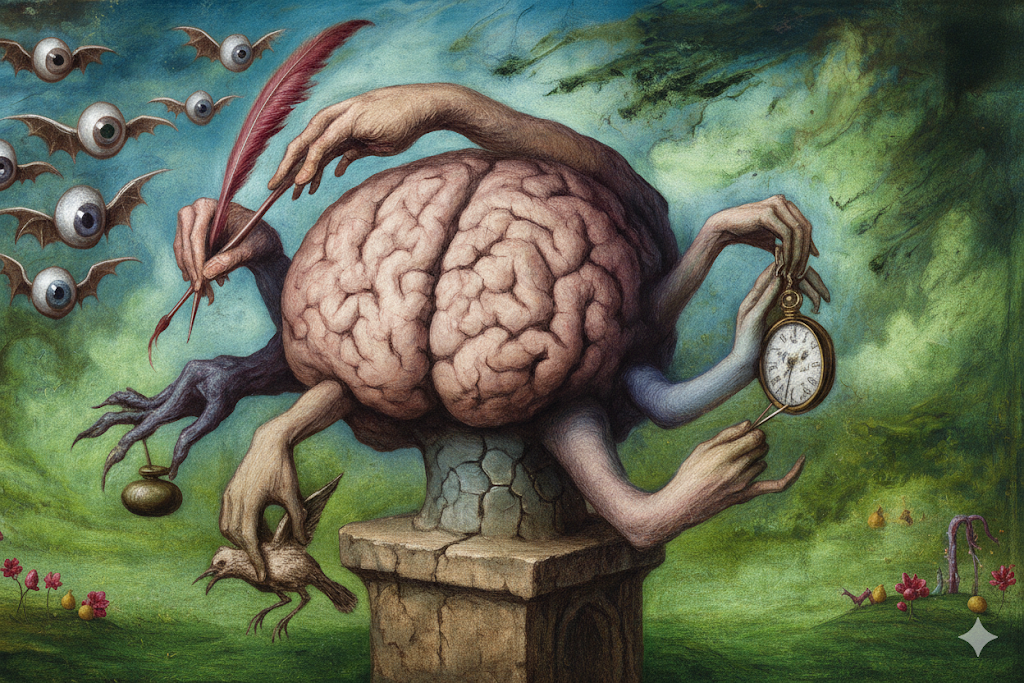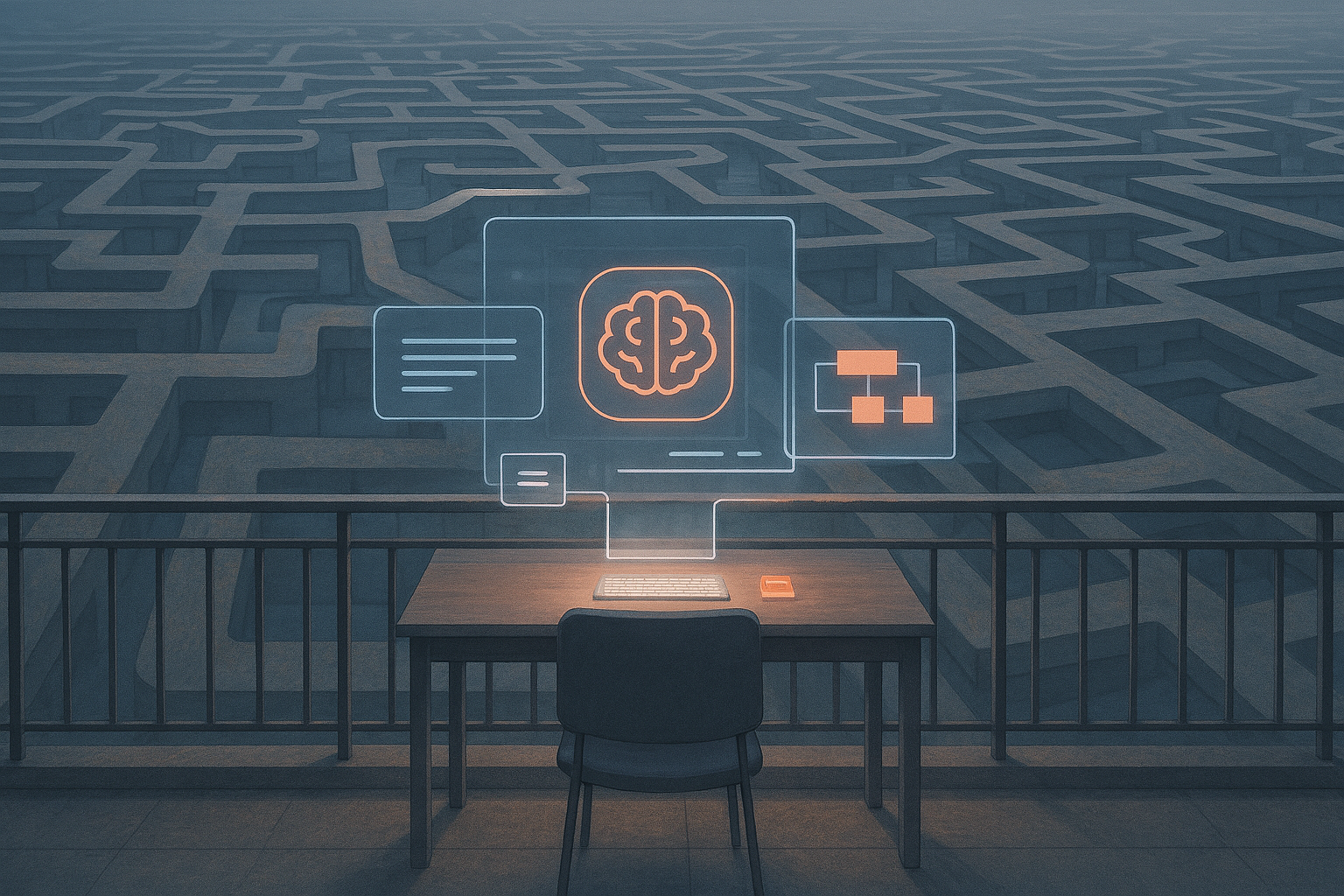Let’s automate friendship!
Last week, I introduced the concept of the 10x Everything-er. Can we use AI to dramatically accelerate more in our lives than software engineering? You may think that applying AI to your social life is perhaps the least appropriate use of this technology. And it could be! I don’t know if I’ll succeed, but I know it is going to be fun.
Why on Earth…?
I’m not actually going to use AI to talk to friends on my behalf. Taking myself out of the communication loop is a bad idea for any application of AI, and especially bad for social conversation. Unlike in productivity tasks, the communication is the point of friendship, not a means to some good or service being produced.
On the other hand, there is a lot of coordination and memory work that goes into maintaining good friendships. Take birthdays: it seems like nearly everyone has one! If you’re like me, you don’t remember any of them. If you’re like my wife, you write them down on paper.
I’ve long thought I should start using a personal-life–focused Customer Relationship Manager (CRM). Salespeople use CRMs to note and track every time they communicate with a lead or customer, helping them sell more stuff later. If I had a personal CRM, I could be reminded of upcoming birthdays, be nudged to hang out with a friend I haven’t seen in a while, remember their dog’s name, and just generally be a better friend. Sounds good!
The problem is, a CRM is an immense amount of work to keep updated. It’s not worth it to do manually, and it would certainly take the joy out of friendships.
Making it easy
Today’s sales CRM systems often have a feature called Auto Data Capture. I’ve helped build it a few times, for Dynamics 365 Sales Insights, Dynamics 365 Sales Premium, and then Viva Sales. My job was on the Microsoft 365 side, constructing the data pipeline from email inboxes to the CRM and the salespeople. Doing this at scale isn’t easy, but even doing it without scale is pretty hard: records are often bad, located in another system, mixed with extra information, or tagged incorrectly.
Let’s use AI to fix that.
My setup
As my first 10x project, I wanted to start with some infrastructure that will meet my goals of flexibility, privacy, and low cost into the future. I’d also like to keep the option to scale up at some point. I’ll run this personal AI CRM on my personal hardware (NVidia 3060 12GB).
I already had my eye on Monica, an open-source CRM designed for social management. I considered rolling my own–how hard could a couple of SQL tables be? But I looked into the feature set, and I liked that it had a web interface and existing API. I’m sure it has also already solved dozens of problems I don’t know exist yet. It’s basically Salesforce for chasing brunch dates instead of quarterly revenue. There’s no reason to write my own when Monica fits the bill.
You can build Monica from source or install it as a Docker container. While I understand containers conceptually, I’ve barely used Docker before. My first step is to have Copilot teach me about it. Docker turns out to be straightforward. Write a config file of the services you want to pull down from the registry, alongside a network and persistent volume. Turn it on or off with “docker compose up -d” and “docker compose down”. I know that I can also deploy the same package to the cloud.
I’ve been meaning to try n8n, an AI-forward workflow tool. It’s somewhere in-between the structured workflows of Power Automate and the AI system tools like LangGraph. It doesn’t have as many connectors as these, but I’ve been hearing good things about it. It is also open source and has a Docker package.
To keep everything local and cheap, I’m using ollama. ollama is a straightforward, popular, and open source host for LLMs. As for the actual model, I’m starting with qwen3:8b, from Alibaba in China. I’ve got a few reasons for choosing it:
- It fits on my GPU without quantization
- It uses reasoning, the new scaling paradigm
- It has done well on many benchmarks, especially for its size
- It is one of a few that ollama supports with tool use
And yes, ollama has a Docker package too. The whole set of services can be dropped into one container, and it will always work the same way. Pretty slick! Let’s start capturing some data.
My process
My first goal is to get all my friends into CRM without typing everything myself. That’s the work won’t add any value to my or anyone else’s life. I start any serious project with an AI as a thought partner. In other words, I’m using AI to write an AI so that I can focus on the human bits. Copilot and I spent some quality time putting together a plan.
I’ve used Facebook Messenger since 2006, so I started there. There’s no API to get your friends list or conversation history, but you can download it via GDPR-mandated data portability request. Meta gives a nice option to get it in JSON, which is perfect for the next steps:
- Import friend names from the Facebook JSON by posting to the Monica API. This one was easy; Copilot and I wrote it in PowerShell.
- Import conversations from the Facebook JSON by posting to the Monica API. I had to get through some issues with this one:
- Messenger conversations can be with 3+ people, but Monica assumes a conversation is 1:1. I decided to write my responses to each other party’s contact page in Monica.
- Monica stores a conversation by date, without timestamps. Back in college I would have many conversations that went past midnight. I decided against trying to solve this problem.
- Facebook doesn’t give any unique IDs for contacts. I used an AI call to match names in the conversation logs with the names in the contact logs. I was worried about contacts changing maiden names to married names, but in hindsight I think that wasn’t the case in this export.
- Process each contact’s conversations to identify topics, life events, names of spouses and children, interests, pets, dietary preferences, and anything else Monica can store or Copilot and I thought might be useful to remember.
- I knew that I couldn’t give hundreds of pages of conversation history to an AI and get decent results. I decided to get the structured metadata of each conversation and store it.
- That’s how far I’ve gotten so far. The next step is to give the AI all the conversations’ metadata for one contact to identify persistent facts, common themes, and the arc of our friendship. I’ll post this second per-contact metadata back into my Monica contacts.
That was the batch process, and I’ll use something similar for text messages and other platforms that I use. My plan is to use n8n to process new messages daily. If you’re interested in using this project yourself, I’m developing the system and scripts as open-source on GitHub.
So far, my personal CRM has 426 contacts and 4,403 conversations. Soon each of those contacts will be full of information that will help me be a better friend.
Is it 10x?
Automatically capturing the data is useless on its own. I’ve got several ideas beyond reminding me of birthdays: timely gift ideas, conversation starters, invest in waning friendships, better Christmas cards, and more. Another idea is to add my AI to each of my messaging apps, so I can quickly jot off a question about someone right as I talk with them.
I’m not going to have AI talk to my friends for me, and I think this project is going to help me a great deal when it is complete. I also think the architecture will scale to other AI assistance and automation in my personal life.
It may take a few weeks to render a verdict on whether a personal AI CRM is going to 10x my social life. I’m optimistic that AI can really help this area! Watch my blog or subscribe to my email newsletter as I multiply other sacred human rituals by a vast matrix of model weights.






